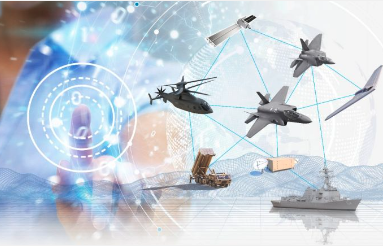The F-35 Lightning II is the most advanced fighter jet in the world, showcasing unparalleled stealth, avionics, and combat capabilities. As tensions rise with China, particularly over the Taiwan Strait, the U.S. must remain vigilant in protecting its technological edge. While China attempts to replicate U.S. military advancements through theft, their imitations fall short in performance. To maintain our strategic advantage, it is imperative that the U.S. enforces stricter security measures and increases penalties for technological espionage, ensuring our innovations remain secure and effective.
This discussion began two weeks ago, sparked by an article in Epoch Times titled “China’s New Fighter Jet is No F-35: Analysis.” According to recent Chinese media reports, China’s J-35 fighter jet is set for launch from a Chinese aircraft carrier. It is positioned as capable of challenging the U.S. military’s F-35, particularly as tensions escalate over the Taiwan Strait.
However, analysts have pointed out that the F-35 holds significant advantages over the J-35 in critical areas such as stealth capability, avionics, engines, and overall performance. In their view, the two aircraft aren’t even comparable.
This month, during the third sea trial of China’s third aircraft carrier, the Fujian, reports from Chinese media, including Tencent, indicated that a “green version of the J-35” was aboard and potentially ready for real-time launch.
The F-35 Lightning II represents the pinnacle of modern military aviation, designed not just for speed or agility but as a flying supercomputer, packed with advanced sensors and cutting-edge technology. While its development has been lengthy and often criticized for delays and cost overruns, the F-35’s capabilities are unmatched, making it an essential asset for the U.S. military in the coming decades.
Although Lockheed Martin (LMT) builds the F-35, there are other manufactures of big weapons such as Northrup-Gorman (NOC) and General Dynamics (GD).
But the subcontractors are doing a lot of heavy lifting for the separate components used.
At the heart of its defensive arsenal is the BriteCloud decoy system (made by Leonard, NYSE-DRS), which adds another layer of protection against radar-guided missiles. The decoy works by jamming enemy radar and confusing incoming missiles, allowing the F-35 to continue its mission unscathed. This technology is crucial, especially in potential conflicts with major adversaries like China or Russia, where the ability to survive and adapt on the battlefield is critical.
The F-35 isn’t just about defense; it’s also about dominance. Equipped with the Electro-Optical Targeting System (EOTS) and the active electronically scanned array (AESA) radar, it can detect and engage targets from miles away, often before they even realize they’re being targeted. The distributed aperture system (DAS) provides a complete 360-degree view, ensuring that the pilot is always aware of the surroundings. Vital information is displayed directly on the pilot’s visor through the advanced heads-up display (HUD).
A deeper dive goes down to the electronic components level to make the items work and endure the g-forces in aerial combat. (Amphenol – APH)
But the F-35’s true power lies in its ability to act as a data hub. Each jet collects vast amounts of information and shares it with ground stations and other allied aircraft, enhancing overall battlefield awareness. The future may even see these jets uploading data to satellites, extending their reach to U.S. Navy ships across the globe.
The competition between the U.S. and China is not just about who can build the most advanced aircraft; it’s also about who can protect their technological developments. As Retired Maj. Gen. Yu Tsung-chi in Taiwan, an adviser to the Formosa Republican Association, explained, China’s strategy is to develop whatever weapons platforms the United States has. Lacking the foundational research and R&D capabilities, the Chinese Communist Party (CCP) often resorts to stealing Western technology.
“The key is that stealing technology only gives you what exists at the time of the theft, while U.S. military technology is constantly evolving and improving,” Yu noted. “The subsequent advancements and breakthroughs in U.S. tech are something the CCP cannot imitate.”
Shen Ming-shih, research fellow and director of the Division of National Security Research at Taiwan’s Institute for National Defense and Security Research, echoed these concerns. He pointed out that many of China’s military developments, such as the J-20 and J-31 fighter jets and the H-20 heavy bomber, are blatant copies of U.S. aircraft like the F-22, F-35, and B-2. However, despite these imitations, China’s versions fall short in materials, system integration, and overall combat effectiveness.
This situation underscores a critical concern: while China may be able to imitate U.S. technology, the quality and performance of their copies are inherently limited. But this does not mean the threat should be underestimated. The CCP’s ongoing attempts to steal and replicate U.S. military technology highlight a serious vulnerability that the United States must address.
As we continue to invest billions in defense, we must also enhance our efforts to secure these technological developments from foreign adversaries. This could involve implementing stricter access controls, increasing penalties for breaches, and ensuring that our innovations remain protected. The stakes are too high to allow our technological edge to be compromised. If we DO NOT act decisively, we risk not only losing our advantage but also empowering those who wish to challenge our security and global stability.
In summary, the F-35 is more than just a symbol of advanced military capability; it’s a reminder that the U.S. must do everything in its power to safeguard the innovations that keep us at the forefront. As military systems become increasingly complex, protecting our technology from theft and imitation is as crucial as the technology itself.
Sources: Epoch Times, Chaikin Analytics, and others since forgotten.
NO STOCK RECOMMENDATIONS. But as an FYI, XAR SPDR S&P Aerospace & Defense Exchange Traded Fund is a basket of military defense stocks.
